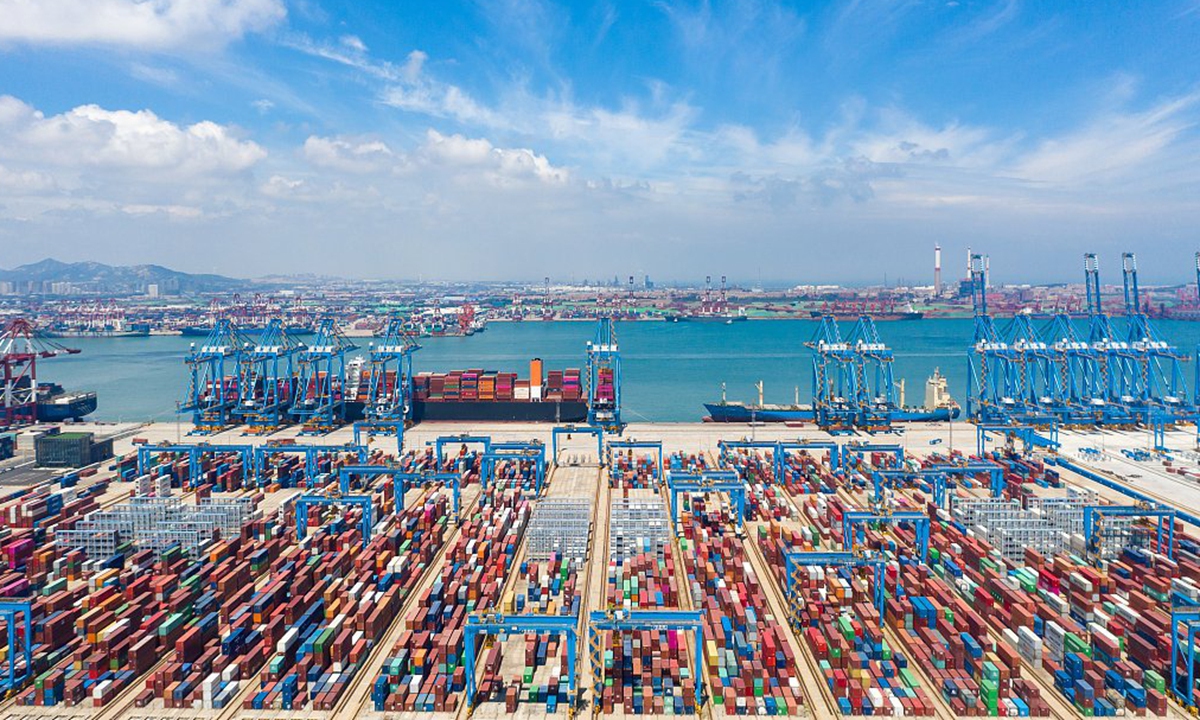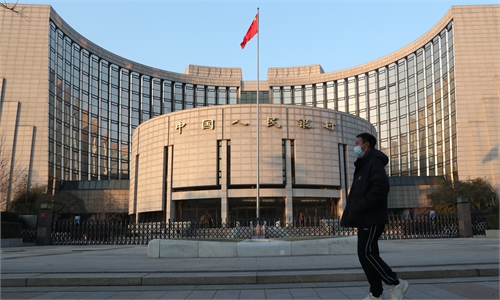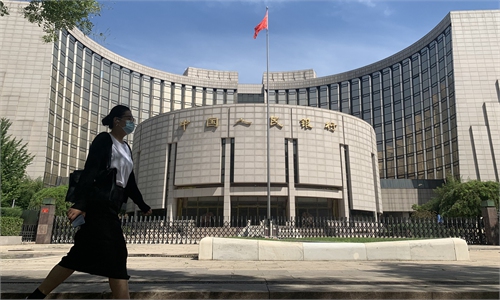
File photo
A range of economic data released on Tuesday by China's National Bureau of Statistics (NBS) pointed to the continued recovery of the national economy, but some Western media outlets interpreted the data as a sign of waning recovery in the Chinese economy, which only reflects their biased and distorted judgment about China's economic prospects.
In April, China's retail sales jumped by 18.4 percent year-on-year, accelerating from the 10.6 percent pace seen in March, while industrial output grew 5.6 percent year-on-year, up from the 3.9 percent growth rate in March and marking the quickest growth since September 2022, according to the NBS data on Tuesday.
As main indicators of a country's economic performance, the data looks quite robust. Yet, strangely, Western media outlets are generally pessimistic about what it says about the Chinese economy. For example, Bloomberg claimed on Tuesday that China's industrial production and retail sales "confirms signals from other recent indicators showing the recovery is waning," as the data missed forecasts. In a recent article, The Economist suggested that China's rise is about to peak.
To a certain extent, Western public opinion regarding China's economic prospects has become increasingly paranoid. On the one side, they generally have high expectations for the robust recovery of the Chinese economy. On the other side, however, once the actual situation doesn't meet their high expectations, they are quick to jump to the opposite conclusion that China's recovery is uncertain and is slowing as its rise is about to peak. This is, in effect, a new wave of Western media badmouthing China's economy with malicious intent.
Some in the West are constantly looking for data to confirm the theory of China's economic peaking is accurate, but each time it turns out to be inaccurate or even ridiculous. They select data with a biased stance, making it impossible to look at China's economic development in a comprehensive and fair way. And their use of the theory and economic model has been far from the correct interpretation of China's economic development.
Yet, whether the Western expectations are high or low, it won't affect China from continuing to do its own things at its own pace, which, at the current moment is to carefully protect its momentum of returning to the normal growth track.
China's economy is still on a gradual path to recovery, and it is important to acknowledge that the external environment facing the country at present is more complicated and severe than what it was facing during the previous recoveries. For starters, in the past, China's previous economic recoveries were generally in sync with the global economy. But this year, when the Chinese economy begins to recover from the pandemic hit, the global economy, especially the developed economies, is on the decline, with the US and other Western countries even risking plunging into a recession and financial crisis. The situation will certainly curb external demand, undercutting exports and recovery momentum.
Second, the geopolitical environment has also added difficulties to China's recovery. The embargo the US and its allies imposed on high-tech imports to China has a direct impact on China's technological progress and industrial upgrading, which may affect investment confidence in related industries.
Despite these external headwinds, multinationals' confidence in the Chinese market remains strong. US companies like Procter & Gamble, Starbucks and MGM Resorts International recently said China's recovery is boosting their overall sales, according to CNBC.
Their confidence actually stems from a major shift in the dynamics of China's economy, that is, consumption has become the key driver to growth, which is also the key to the current recovery.
If anything, consumer spending seen across the May Day holidays is sufficient to indicate how strong China's domestic demand can be. A total of 274 million domestic trips were made nationwide during the May Day holidays in 2023, a year-on-year increase of 70.83 percent, surpassing the 2019 level for the same holiday, according to China's Ministry of Culture and Tourism.
Some may be still concerned about China's consumption growth due to some short-term data, but from the long-term perspective, China's consumption potential is assured.
First, the continuing urbanization will lead to greater domestic demand. In 2022, China's urbanization rate is 65.2 percent, more than 10 percentage points lower than the average urbanization levels of 75 to 80 percent in developed countries.
Second, China has more than 400 million middle-income earners, which is expected to transfer into real domestic demand as the country is eyeing to become the world's largest consumer market.
Also, from the perspective of the long-term development of the real economy, China has taken a dominant position in some new emerging areas, such as AI, new energy, and electric vehicles. In addition to the manufacturing strength, China's digital economy, financial opening-up, economic reforms, among others all have the potential to drive future growth.
Therefore, anyone with the knowledge of China's potential in the medium and long term will know how narrow-minded and shallow the theory of "China's rise is about to peak" actually is.



